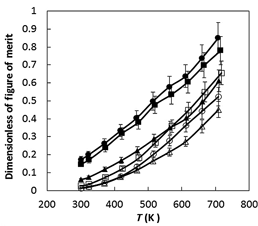Crossref Citations
This article has been cited by the following publications. This list is generated based on data provided by
Crossref.
Suekuni, K.
Tomizawa, Y.
Ozaki, T.
and
Koyano, M.
2014.
Systematic study of electronic and magnetic properties for Cu12–xTMxSb4S13 (TM = Mn, Fe, Co, Ni, and Zn) tetrahedrite.
Journal of Applied Physics,
Vol. 115,
Issue. 14,
Liu, F.S.
Wang, B.
Ao, W.Q.
Li, Y.
and
Li, J.Q.
2014.
Crystal structure and thermoelectric properties of Cu2Cd1−xZnxSnSe4 solid solutions.
Intermetallics,
Vol. 55,
Issue. ,
p.
15.
Bourgès, Cédric
Lemoine, Pierric
Lebedev, Oleg I.
Daou, Ramzy
Hardy, Vincent
Malaman, Bernard
and
Guilmeau, Emmanuel
2015.
Low thermal conductivity in ternary Cu4Sn7S16 compound.
Acta Materialia,
Vol. 97,
Issue. ,
p.
180.
Barbier, Tristan
Lemoine, Pierric
Gascoin, Stéphanie
Lebedev, Oleg I.
Kaltzoglou, Andreas
Vaqueiro, Paz
Powell, Anthony V.
Smith, Ron I.
and
Guilmeau, Emmanuel
2015.
Structural stability of the synthetic thermoelectric ternary and nickel-substituted tetrahedrite phases.
Journal of Alloys and Compounds,
Vol. 634,
Issue. ,
p.
253.
Chetty, Raju
D. S., Prem Kumar
Rogl, Gerda
Rogl, Peter
Bauer, Ernst
Michor, Herwig
Suwas, Satyam
Puchegger, Stephan
Giester, Gerald
and
Mallik, Ramesh Chandra
2015.
Thermoelectric properties of a Mn substituted synthetic tetrahedrite.
Physical Chemistry Chemical Physics,
Vol. 17,
Issue. 3,
p.
1716.
Chetty, R.
Bali, A.
and
Mallik, R. C.
2015.
Tetrahedrites as thermoelectric materials: an overview.
Journal of Materials Chemistry C,
Vol. 3,
Issue. 48,
p.
12364.
Welch, Adam W.
Zawadzki, Pawel P.
Lany, Stephan
Wolden, Colin A.
and
Zakutayev, Andriy
2015.
Self-regulated growth and tunable properties of CuSbS2 solar absorbers.
Solar Energy Materials and Solar Cells,
Vol. 132,
Issue. ,
p.
499.
Chetty, R.
Bali, A.
Naik, M.H.
Rogl, G.
Rogl, P.
Jain, M.
Suwas, S.
and
Mallik, R.C.
2015.
Thermoelectric properties of Co substituted synthetic tetrahedrite.
Acta Materialia,
Vol. 100,
Issue. ,
p.
266.
Carr, Winston D.
and
Morelli, Donald T.
2015.
Influence of doping and solid solution formation on the thermoelectric properties of chalcopyrite semiconductors.
Journal of Alloys and Compounds,
Vol. 630,
Issue. ,
p.
277.
Zhang, Xiao
and
Zhao, Li-Dong
2015.
Thermoelectric materials: Energy conversion between heat and electricity.
Journal of Materiomics,
Vol. 1,
Issue. 2,
p.
92.
Suekuni, Koichiro
and
Takabatake, Toshiro
2016.
Research Update: Cu–S based synthetic minerals as efficient thermoelectric materials at medium temperatures.
APL Materials,
Vol. 4,
Issue. 10,
Barbier, Tristan
Rollin‐Martinet, Sabrina
Lemoine, Pierric
Gascoin, Franck
Kaltzoglou, Andreas
Vaqueiro, Paz
Powell, Anthony V.
Guilmeau, Emmanuel
and
Zhou, X.‐D.
2016.
Thermoelectric Materials: A New Rapid Synthesis Process for Nontoxic and High‐Performance Tetrahedrite Compounds.
Journal of the American Ceramic Society,
Vol. 99,
Issue. 1,
p.
51.
Barbier, Tristan
Lemoine, Pierric
Martinet, Sabrina
Eriksson, Mirva
Gilmas, Margaux
Hug, Eric
Guélou, Gabin
Vaqueiro, Paz
Powell, Anthony V.
and
Guilmeau, Emmanuel
2016.
Up-scaled synthesis process of sulphur-based thermoelectric materials.
RSC Advances,
Vol. 6,
Issue. 12,
p.
10044.
Bourgès, Cédric
Gilmas, Margaux
Lemoine, Pierric
Mordvinova, Natalia E.
Lebedev, Oleg I.
Hug, Eric
Nassif, Vivian
Malaman, Bernard
Daou, Ramzy
and
Guilmeau, Emmanuel
2016.
Structural analysis and thermoelectric properties of mechanically alloyed colusites.
Journal of Materials Chemistry C,
Vol. 4,
Issue. 31,
p.
7455.
Zhao, Li-Dong
Chang, Cheng
Tan, Gangjian
and
Kanatzidis, Mercouri G.
2016.
SnSe: a remarkable new thermoelectric material.
Energy & Environmental Science,
Vol. 9,
Issue. 10,
p.
3044.
Levinsky, P.
Vaney, J.-B.
Candolfi, C.
Dauscher, A.
Lenoir, B.
and
Hejtmánek, J.
2016.
Electrical, Thermal, and Magnetic Characterization of Natural Tetrahedrites–Tennantites of Different Origin.
Journal of Electronic Materials,
Vol. 45,
Issue. 3,
p.
1351.
Tanaka, Hiromi I.
Suekuni, Koichiro
Umeo, Kazunori
Nagasaki, Toshiki
Sato, Hitoshi
Kutluk, Galif
Nishibori, Eiji
Kasai, Hidetaka
and
Takabatake, Toshiro
2016.
Metal–Semiconductor Transition Concomitant with a Structural Transformation in Tetrahedrite Cu12Sb4S13.
Journal of the Physical Society of Japan,
Vol. 85,
Issue. 1,
p.
014703.
Hébert, S
Berthebaud, D
Daou, R
Bréard, Y
Pelloquin, D
Guilmeau, E
Gascoin, F
Lebedev, O
and
Maignan, A
2016.
Searching for new thermoelectric materials: some examples among oxides, sulfides and selenides.
Journal of Physics: Condensed Matter,
Vol. 28,
Issue. 1,
p.
013001.
Tan, Gangjian
Zhao, Li-Dong
and
Kanatzidis, Mercouri G.
2016.
Rationally Designing High-Performance Bulk Thermoelectric Materials.
Chemical Reviews,
Vol. 116,
Issue. 19,
p.
12123.
Prem Kumar, D.S.
Chetty, Raju
Rogl, Peter
Rogl, Gerda
Bauer, Ernst
Malar, P.
and
Mallik, Ramesh Chandra
2016.
Thermoelectric properties of Cd doped tetrahedrite: Cu12−xCdxSb4S13.
Intermetallics,
Vol. 78,
Issue. ,
p.
21.
